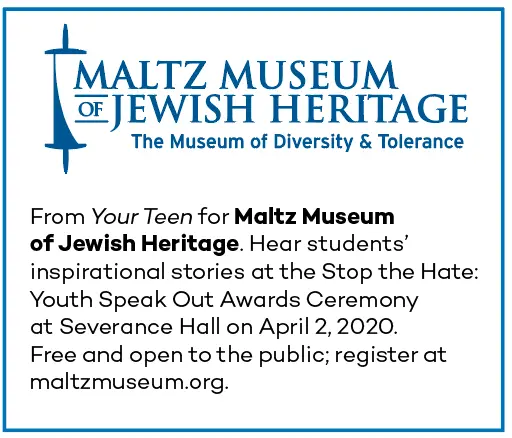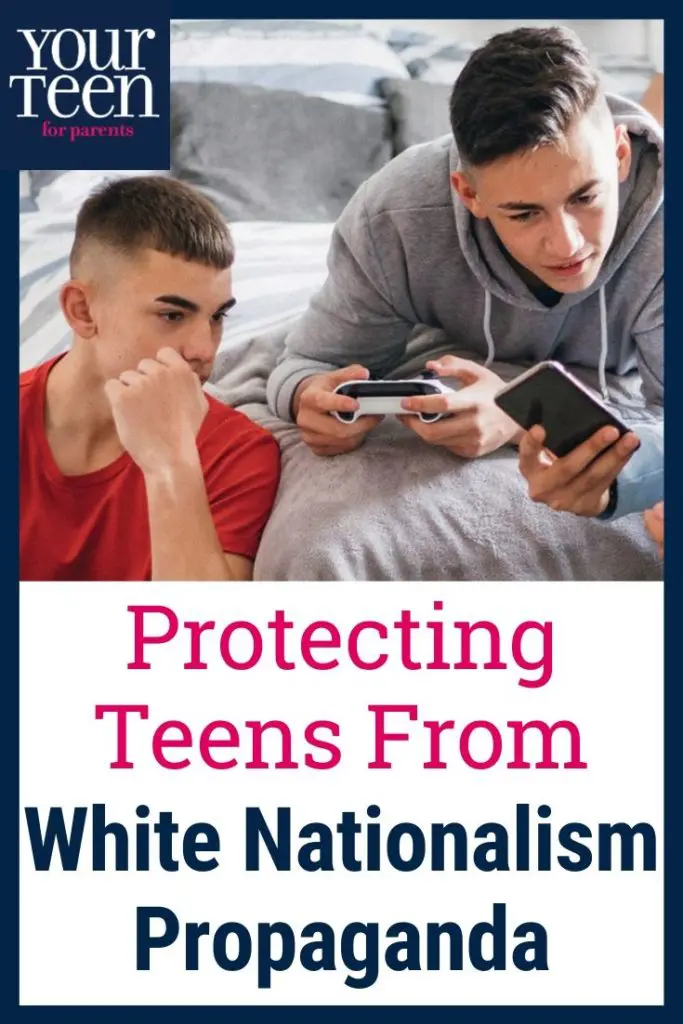Joanna Schroeder of Los Angeles has always modeled tolerance and inclusivity to her two teenage sons and young daughter. So she was shocked when she discovered that one of her sons was drawn to the kind of online content that right-wing hate groups use to recruit young people.

The realization came while Schroeder was driving her sons and their friends. One kid looked at a meme on his phone and shouted “Triggered!”—a comeback sometimes used by alt-righters against people upset by racism. The other kids laughed. Later, Schroeder caught her son “liking” a pro-Hitler Instagram post. Though he said he’d assumed the poster was being ironic, Schroeder was alarmed. “His normal teen curiosity and urge to push away from his family’s founding opinions and perspectives was being manipulated by people who had nefarious intentions,” she says.
The Rise of White Nationalism
White nationalism—a movement that espouses white supremacy—“has been around for a long time,” says Mark Cole, Ph.D., an associate college lecturer in history at Cleveland State University. So why does it seem especially prevalent now? “It’s rearing its ugly head via social media and the news,” he says.
| [adrotate banner=”153″] |
Unfortunately, teens are especially vulnerable to the messages of right-wing hate groups. This is partly because they yearn for a sense of belonging. It’s also because of the vast amounts of time they spend online. “These white nationalists now understand that via social media, the internet, apps, and memes, they’re able to make connections in ways that were not previously possible,” Cole says. For example, they have been known to post racist or anti-Semitic messages and images on sites that some teens frequent, including the anonymous website 4chan and online gaming sites such as World of Warcraft.
Also, “there’s a whole genre of YouTube commentary that’s pushing everything right to the limit,” Schroeder says.
Halting the Hatred

1. Learn how to spot propaganda from white nationalists.
The lingo changes often and can be subtle. “88” for instance, is code for “Heil Hitler,” with each 8 standing for an H (the eighth letter in the alphabet). Visit the Anti-Defamation League’s Hate on Display Hate Symbols Database to see the symbols most often used by white supremacists and some other hate groups.
2. Start the conversation.
It’s important to begin the conversation in a non-confrontational manner, says Ben Becker, who manages public programs for the Maltz Museum of Jewish Heritage in Beachwood, Ohio. “We focus on the golden rule,” he adds. “You can start by asking, ‘Is this the way you would want someone to treat you?’”
| [adrotate banner=”150″] |
3. Try not to react with outrage.
If you see your child sporting a white supremacist symbol, or hear him laughing at or repeating offensive messages, resist the urge to say, “That’s so racist!” “I did that at first, and it only pushed my son away,” Schroeder says. Instead, when you have some time together, such as in the car, tease out what is so appealing about the content. Then gently explain why it’s so damaging.
4. Encourage your teen to stand up to hatred.
“It’s critical to encourage students to act when they see hateful speech or actions in their community,” says Becker. For this very reason, the Maltz Museum sponsors an annual essay contest called Stop the Hate, which shines a light on teens who stand up to intolerance.

We all hope that our teens will not be swayed by the rhetoric of hate groups of any affiliation. But parents must be vigilant. Says Becker, “It’s up to each one of us to work for the type of community that values and supports every individual, no matter what their differences may be.”




